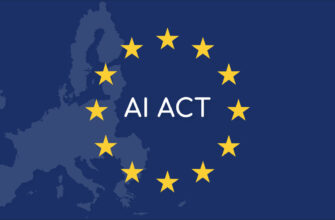The iPhone 16 topped the ranking of the world’s best-selling smartphones, with Xiaomi being the only Chinese brand in the top 10. That sentence is a quick headline, but behind it lies a story about shifting demand, clever marketing, supply chain resilience, and how consumers vote with their wallets. If you follow smartphone charts and quarterly sales reports, you know each ranking is a snapshot of many moving parts. Let’s walk through what this latest ranking tells us about the market, why Apple managed to push the iPhone 16 to the summit, and why Xiaomi’s solitary presence among the highest sellers matters more than you might think.
- Reading the Ranking: More Than Just Numbers
- Quick Look: Top 10 Best-Selling Smartphones (Illustrative)
- Why the iPhone 16 Topped the Ranking
- Apple’s Ecosystem Edge
- Why Xiaomi Was the Only Chinese Brand in the Top 10
- What It Says About Other Chinese Brands
- How Consumers Reacted — A Quick List of Takeaways
- Regional Differences Matter
- What This Means for Competitors and the Market
- Table: Quick Competitive Positioning
- Looking Ahead: Will the iPhone 16 Stay on Top?
- Conclusion
Reading the Ranking: More Than Just Numbers
When a device like the iPhone 16 tops the ranking, it’s tempting to treat the news as a simple victory lap: Apple made a great phone, buyers flocked, end of story. But sales rankings encapsulate product timing, carrier deals, holiday cycles, new software features, and even geopolitical trends. The iPhone 16’s climb was helped by a combination of pent-up upgrade demand after a slower upgrade cycle, high promotional visibility, and Apple’s tight hardware-software integration, which makes each new iteration feel like a clear improvement to many users.
At the same time, the fact that Xiaomi is the only Chinese brand in the top 10 highlights how global competition has shifted. For years, brands such as Huawei, OPPO, and Vivo pushed aggressively into both domestic and international markets. Market dynamics — from regulatory pressure to shifting consumer priorities — have reordered the leaderboard. Xiaomi capturing a solo spot in the top 10 signals that some Chinese brands are consolidating their strengths in specific segments, while others retool their strategies.
Quick Look: Top 10 Best-Selling Smartphones (Illustrative)
Below is a simple table that reflects the kind of ranking that created today’s headlines. Note that this is an illustrative snapshot to help understand the market mix and trends — brand names and positions are used here to explain the landscape, not to claim exact market-share figures.
| Rank | Model | Brand | Why It Sold |
|---|---|---|---|
| 1 | iPhone 16 | Apple | Strong upgrades, software features, carrier promotions |
| 2 | iPhone 15 | Apple | Residual demand from last year’s line |
| 3 | Galaxy S24 | Samsung | Flagship hardware, broad carrier reach |
| 4 | Galaxy A54 | Samsung | Value-focused, wide global availability |
| 5 | iPhone 16 Pro | Apple | Premium buyers, camera and performance upgrades |
| 6 | Pixel 8 | Pure Android experience, camera appeal | |
| 7 | Redmi Note 13 | Xiaomi | Strong price-to-performance ratio |
| 8 | iPhone SE (2024) | Apple | Affordable Apple entry model |
| 9 | Xperia 1 V | Sony | Niche high-end users, camera and media |
| 10 | Galaxy A14 | Samsung | Entry-level ubiquity in many markets |
Why the iPhone 16 Topped the Ranking
Apple’s success with the iPhone 16 isn’t just a single-factor story. Several elements combined to push it to number one:
– Product timing: The new model launched at the right moment in the buying cycle, capturing holiday demand and business upgrades.
– Incremental improvements: While the updates might have looked modest on paper, they were meaningful for many users — better battery life, camera improvements, and new software features that tie into Apple’s ecosystem.
– Carrier and trade-in incentives: Aggressive trade-in offers and carrier subsidies lowered the effective price for many buyers, making upgrades more attractive.
– Brand trust and resale value: Apple’s brand strength and typically high resale values reduce the “cost” of upgrading, because users can recoup more of their spend later.
– Global availability: Apple’s distribution channels and supply chain resilience ensured the iPhone 16 was widely available at launch, avoiding the allocation bottlenecks that sometimes slow early sales.
Apple’s Ecosystem Edge
A big part of why iPhone 16 sales surged is the Apple ecosystem. Once users own an iPad, Mac, Apple Watch, or AirPods, the convenience of syncing, continuity features, and cross-device functionality becomes sticky. Many buyers cite the seamless experience — messages, calls, Handoff, and continuity camera features — as a reason to stay within Apple’s ecosystem. In a market where hardware differences can be incremental, software integration becomes a powerful differentiator.
Why Xiaomi Was the Only Chinese Brand in the Top 10
Xiaomi’s presence as the sole Chinese brand in the top 10 is noteworthy because it suggests a narrowing of the high-volume playing field among Chinese manufacturers — at least for this ranking period. Xiaomi historically balanced premium devices and aggressive value-driven models. That strategy can produce mass-market winners like the Redmi series, which is often propelled by excellent price-to-spec metrics.
There are several reasons Xiaomi stands out here:
– Diverse product lineup: Xiaomi straddles premium and mass-market segments, so it can capture different buyer types.
– Global presence: Xiaomi has focused on expanding beyond its domestic market, particularly in regions where price sensitivity is high.
– Effective marketing and local partnerships: Xiaomi often leverages localized campaigns and carrier relationships to drive sales in specific markets.
– Product diversity: Beyond smartphones, Xiaomi’s ecosystem of IoT devices keeps its brand front-of-mind for consumers, which indirectly boosts smartphone sales.
What It Says About Other Chinese Brands
The absence of other big Chinese brands from the top 10 for this snapshot doesn’t mean they’re failing universally. Rather, it can reflect strategic decisions: prioritizing profitability over volume, shifting focus to markets where they have better margins, or navigating regulatory hurdles. It can also indicate that market share is consolidating among fewer players, giving brands like Xiaomi the advantage in certain price bands.
How Consumers Reacted — A Quick List of Takeaways
- Upgrade waves: Many buyers who delayed upgrades jumped in when the iPhone 16 landed.
- Value hunting: In several regions, buyers preferred Xiaomi’s strong value models over pricier flagships.
- Brand loyalty: Apple’s brand loyalty remains exceptionally high, converting interest into sales fast.
- Market sensitivity: Economies with tighter budgets still favored mid-range offerings, helping Xiaomi secure its top-10 placement.
- Feature-focused purchases: Camera improvements and battery life often tipped the balance for buyers considering premium purchases.
Regional Differences Matter
Keep in mind that a global top-10 ranking averages out very different regional trends. In North America and parts of Europe, Apple’s dominance is stronger, so iPhones often capture several top spots. In South and Southeast Asia, affordability and availability can push mid-range Android models higher. Xiaomi’s single top-10 slot likely reflects concentrated strength in price-conscious regions where it has the most traction.
What This Means for Competitors and the Market
A few strategic implications follow from this ranking:
– Samsung must continue balancing premium and mass-market models. Its broad portfolio keeps it competitive across segments, but it needs standout innovations to reclaim No. 1.
– Other Chinese brands may double down on regional niches or pivot to focus on profitability rather than global volume.
– Newer entrants or repositioned brands will look for gaps in the market — perhaps focusing on sustainability, repairability, or specialized camera features.
– For consumers, this ranking suggests strong choices across budgets: premium integration (Apple), camera-first alternatives (Google/Sony), and unbeatable value (Xiaomi).
Table: Quick Competitive Positioning
| Brand | Positioning | Strength | Risk |
|---|---|---|---|
| Apple | Premium, ecosystem | Brand loyalty, software-hardware integration | High price sensitivity in some markets |
| Samsung | Full-range (flagship to entry) | Wide availability, carrier ties | Needs clear flagship differentiation |
| Xiaomi | Value-to-premium | Price-to-spec advantage, diverse lineup | Margin pressure, regional variability |
| Software-first | Camera algorithms, pure Android | Narrower distribution |
Looking Ahead: Will the iPhone 16 Stay on Top?
Rankings are fluid. The iPhone 16’s leading position could hold through the next quarters if Apple maintains supply and consumer interest remains strong. However, sales can shift quickly with new promotions, aggressive mid-cycle releases from competitors, or unexpected economic changes. Xiaomi’s presence in the top 10 suggests that as long as it continues delivering unmatched value in targeted regions, it will stay a force to reckon with.
Smartphone buyers should watch a few signals: trade-in program changes, carrier subsidy adjustments, and any major software features that lock users further into ecosystems. Those can accelerate shifts in the next ranking periods.
Conclusion

The iPhone 16 topped the ranking of the world’s best-selling smartphones because Apple combined timely releases, ecosystem advantages, and strong promotions to convert interest into purchases — and Xiaomi being the only Chinese brand in the top 10 shows how competitive positioning and regional strengths matter in a crowded market. Whether you’re a tech enthusiast tracking market share, a buyer weighing your next upgrade, or someone curious about industry strategy, this ranking is a reminder that the smartphone world is always active and full of surprises.
If you enjoyed this breakdown and want more in-depth analysis, tips on picking your next phone, and the latest market news, visit https://themors.com/ for more articles and fresh insights.









